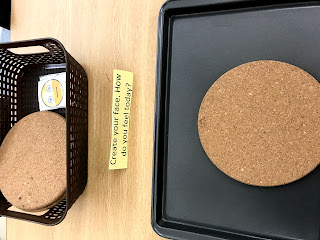"Coming together as a community to create a truly inclusive system of early childhood care and education requires commitment and a willingness to strive to be ready to teach and support every child in the community." (Including Children with Special Needs, by Amy Watson and Rebecca McCathren)
https://www.researchgate.net/publication/312053148_Bilingual_Education_in_Canada
Research suggests, for example, that effective instruction acknowledges students' gender differences and reaffirms their cultural, ethnic, and linguistic heritages. Many effective instructional approaches build on students' backgrounds to further the development of their abilities. Critically important is recognizing that the use of effective instructional practices as demonstrated by research will improve achievement for all children, including those who are not minorities or children of poverty. The implementation of sound, research-based strategies that recognize the benefits of diversity can build a better future for all of us.
Amazing Resource:
Diverse Teaching Strategies for Diverse Learners
(http://www.ascd.org/publications/books/107003/chapters/Diverse-Teaching-Strategies-for-Diverse-Learners.aspx)
Zeichner (1992) has summarized the extensive literature that describes successful teaching approaches for diverse populations. From his review, he distilled 12 key elements for effective teaching for ethnic- and language-minority students.
- Teachers have a clear sense of their own ethnic and cultural identities.
- Teachers communicate high expectations for the success of all students and a belief that all students can succeed.
- Teachers are personally committed to achieving equity for all students and believe that they are capable of making a difference in their students' learning.
- Teachers have developed a bond with their students and cease seeing their students as "the other."
- Schools provide an academically challenging curriculum that includes attention to the development of higher-level cognitive skills.
- Instruction focuses on students' creation of meaning about content in an interactive and collaborative learning environment.
- Teachers help students see learning tasks as meaningful.
- Curricula include the contributions and perspectives of the different ethnocultural groups that compose the society.
- Teachers provide a "scaffolding" that links the academically challenging curriculum to the cultural resources that students bring to school.
- Teachers explicitly teach students the culture of the school and seek to maintain students' sense of ethnocultural pride and identity.
- Community members and parents or guardians are encouraged to become involved in students' education and are given a significant voice in making important school decisions related to programs (such as resources and staffing).
- Teachers are involved in political struggles outside the classroom that are aimed at achieving a more just and humane society.
Example of Educating Students with Special Needs
http://www.familyconnect.org/info/education/1
We have a student who is partially visually impaired. She has an vision itinerant teacher that works with her for the first part of the day. She engages her in the learning through tools like an ipad, magnifying camera and screen, and magnified visual pictures. When she's not there, we usually have her sit up close to the easel and bring the picture book closer to her so we use proximity and the students know why we are doing that and respect the time she takes to look closer to the details in the pictures. It seems to be giving sense of community for the rest of the class and being an inclusive classroom to all.
Start to the school year
Ensuring a well-planned and organized start to the school year is critical for children with special education needs. Schools keep families informed about the requirements and procedures necessary for September enrolment. A sample school checklist that identifies some of the requirements is included below:School checklist for entry of students with special education needs in Kindergarten
- Register in January to allow for a well-planned transition
- Complete the registration form, and the Kindergarten Parent Questionnaire
- With parental consent, an observation visit to the preschool setting is arranged for school staff and appropriate support staff
Kindergarten is such a memorable experience for children and their family members, and it is the beginning of a child's formal educational career. Kindergarten provides opportunities for children to grow and develop physically, emotionally, socially and academically, and for many families it is an exciting and sometimes challenging time. It is a new experience for both the child and the parents, and change can be somewhat challenging at first. By planning ahead and thinking about the ways you can support your child in this new adventure, you can make the transition to kindergarten a smooth one for your child and your family. This is especially important for families of children with special needs.
https://www.shastacoe.org/uploaded/Dept/selpa/CAC/Countdown_to_Kindergarten_Final_Eng.pdf
https://www.shastacoe.org/uploaded/Dept/selpa/CAC/Countdown_to_Kindergarten_Final_Eng.pdf
 |
| https://globaldigitalcitizen.org/11-simple-ways-to-start-using-technology-in-your-classroom |
 |
| http://www.achildwithneeds.com/parenting/learning-websites-for-kids/ |





































